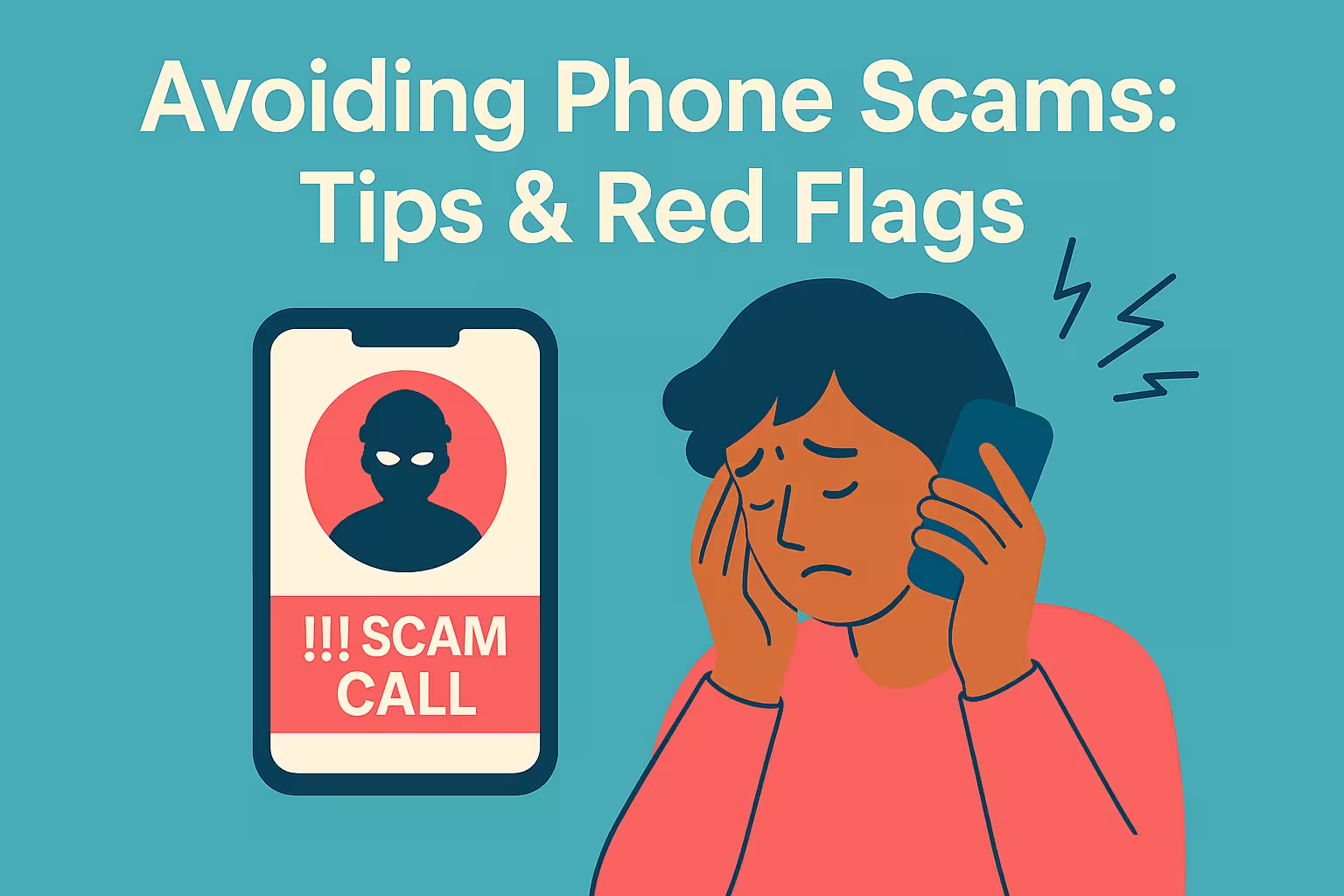
Avoiding Phone Scams: Tips & Red Flags
Phone scams continue to be one of the most common and costly forms of fraud, tricking millions of people into giving up sensitive personal and financial information. Whether it’s a robocall pretending to be the IRS or a fake tech support agent asking for remote access, these scams are designed to create urgency and pressure victims into making quick decisions.
In this guide, we’ll show you how to recognize red flags, avoid falling for phone scams, and understand which area codes are frequently used by fraudsters.
📱 What Is a Phone Scam?
A phone scam is a deceptive call or text message intended to trick the recipient into:
- Sending money
- Providing personal data (e.g., Social Security numbers, banking details)
- Downloading malware
- Buying fake products or services
Phone scammers often use caller ID spoofing, making their calls appear to come from local numbers or trusted institutions. They may impersonate banks, government agencies, tech support, or even family members in distress.
🚩 Common Types of Phone Scams
1. IRS/Tax Scams
Scammers claim you owe taxes and threaten arrest if you don’t pay immediately via gift cards or wire transfer.
2. Tech Support Scams
You’re told your computer has a virus and are pressured into giving remote access or paying for fake services.
3. Prize/Lottery Scams
You’ve “won” a prize but need to pay fees or taxes before collecting. Legitimate lotteries never ask for money upfront.
4. Romance Scams
Posing as romantic interests, scammers build trust before requesting money or gifts.
5. Impersonation Scams
Scammers pretend to be your bank, utility company, or even a relative to trick you into sending funds or account access.
⚠️ High-Risk Area Codes Frequently Used by Scammers
While scammers can spoof any number, some area codes are often flagged as suspicious or international in origin, including:
- 473 – Grenada (commonly used in “one ring” scams)
- 268 – Antigua and Barbuda
- 876 – Jamaica
- 284 – British Virgin Islands
- 809 – Dominican Republic
These international area codes look like U.S. numbers, and returning the call can lead to expensive long-distance charges or worse — engagement in a scam.
🔒 How to Avoid Phone Scams
✅ 1. Let Unknown Calls Go to Voicemail
If it’s important, they’ll leave a message. Don’t answer unknown numbers, especially from unfamiliar area codes.
✅ 2. Never Share Personal Information
Banks, government agencies, and utilities will never ask for personal info like Social Security numbers or passwords over the phone.
✅ 3. Don’t Press Buttons or Say “Yes”
Some robocalls ask you to press a number to speak to an agent — don’t! Saying “yes” can also be recorded and misused for fraud.
✅ 4. Verify Before You Act
If someone calls claiming to be from your bank or another official entity, hang up and call back using a number from the official website.
✅ 5. Use Call Blocking Apps
Install call-blocking or spam filter apps to help detect and block known scam numbers automatically.
🔧 What to Do If You Think You’ve Been Scammed
- Hang up immediately
- Do not call back
- Report the scam to the FTC: reportfraud.ftc.gov
- Notify your bank if you shared financial details
- Reset passwords and enable two-factor authentication if your accounts may be compromised
🧠 Bonus Tips for Phone Safety
- Add your number to the National Do Not Call Registry: donotcall.gov
- Block suspicious area codes or entire ranges in your phone settings
- Stay informed about trending scam tactics via trusted sources like AARP and FCC
🧭 Summary
Phone scams are evolving, but with awareness and caution, you can protect yourself from fraud. Never give out personal information over the phone, especially to unknown callers. Be skeptical of urgency, threats, or anything too good to be true. Recognizing the red flags is the first step in staying safe.
If you ever feel unsure, hang up, verify independently, and report the incident. Stay informed, stay alert, and help others avoid falling victim to these schemes.
Written by the team at AreaCodeMaps.com — your trusted source for phone number lookups, telecom insights, and area code guides.